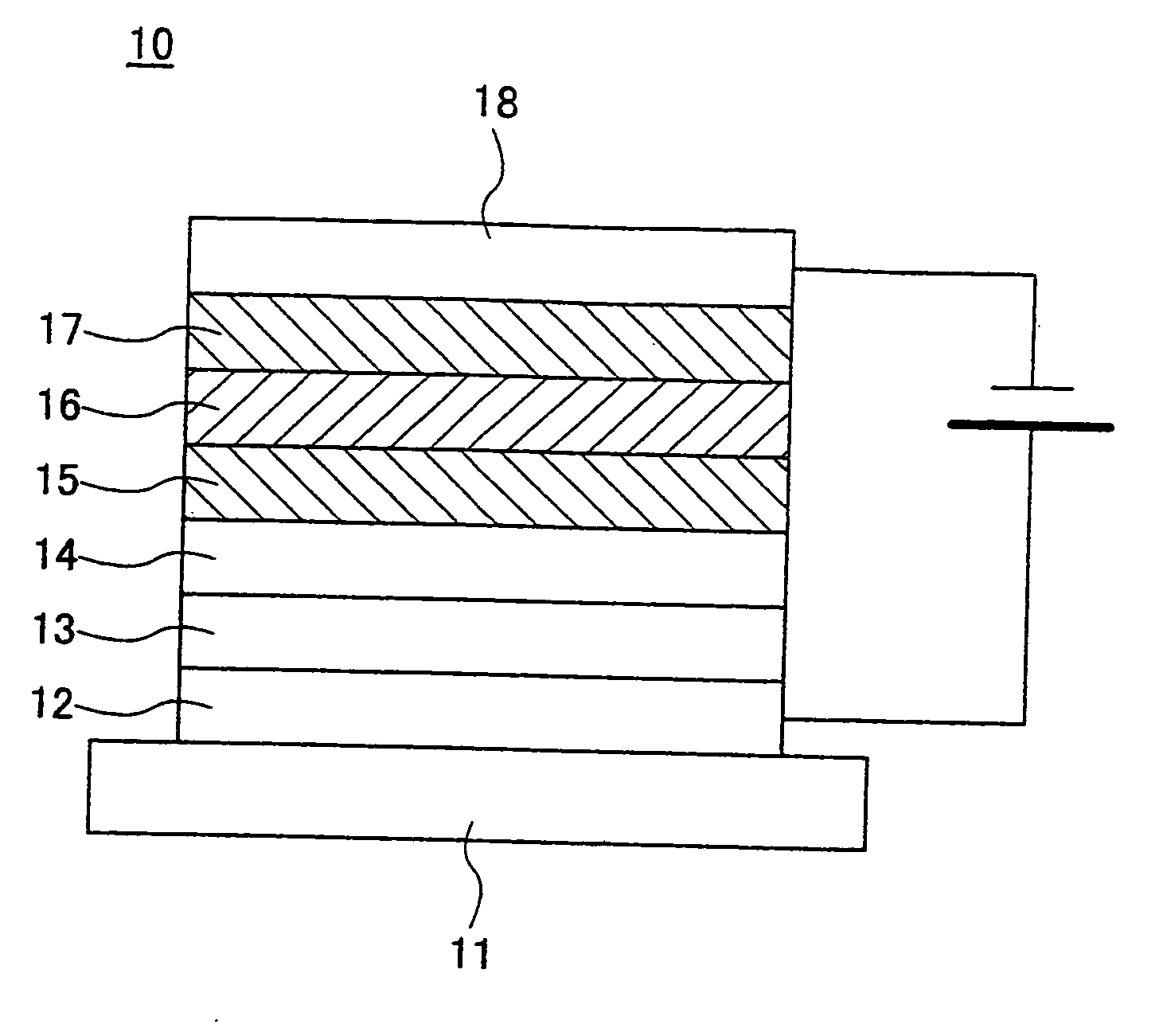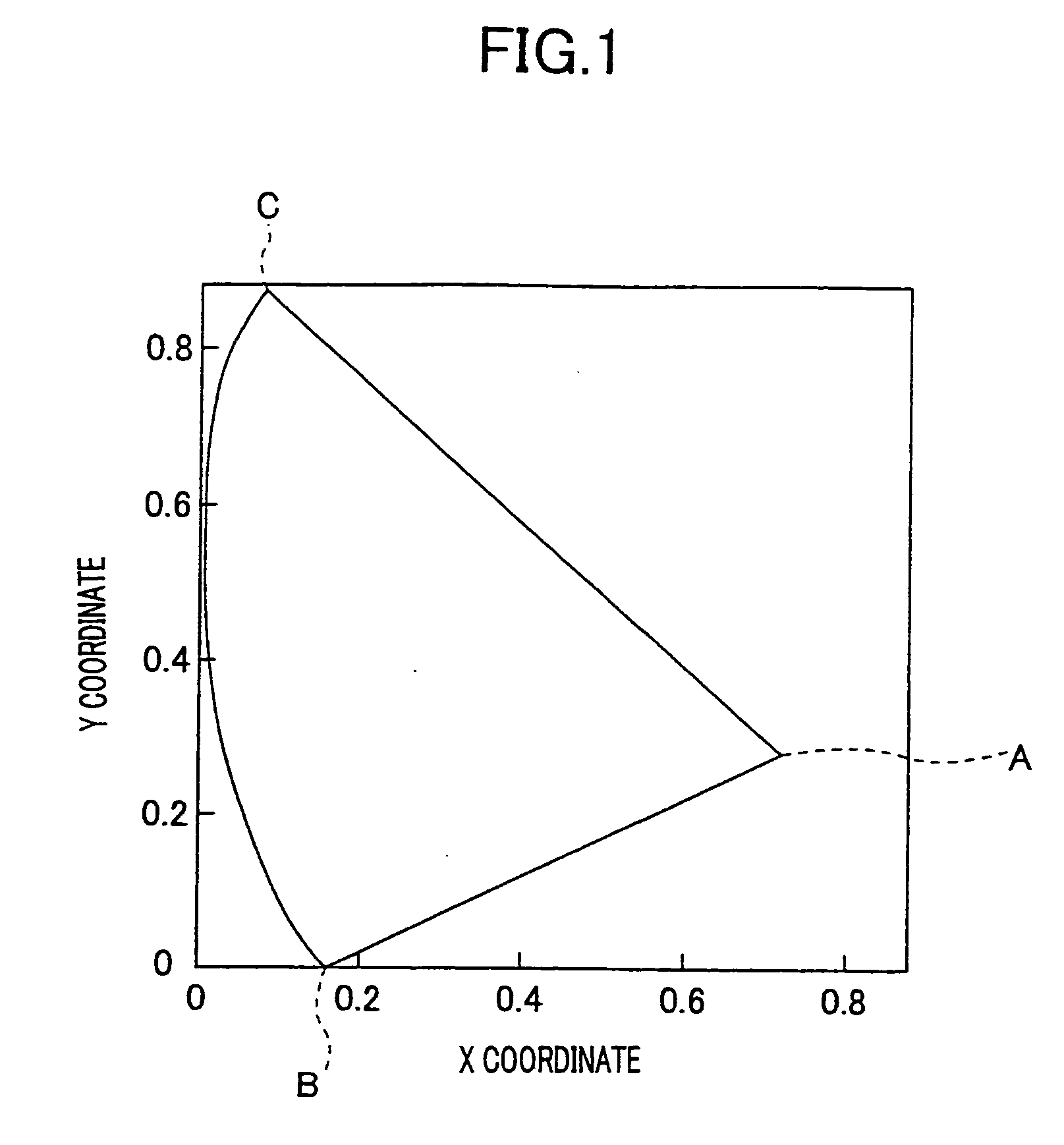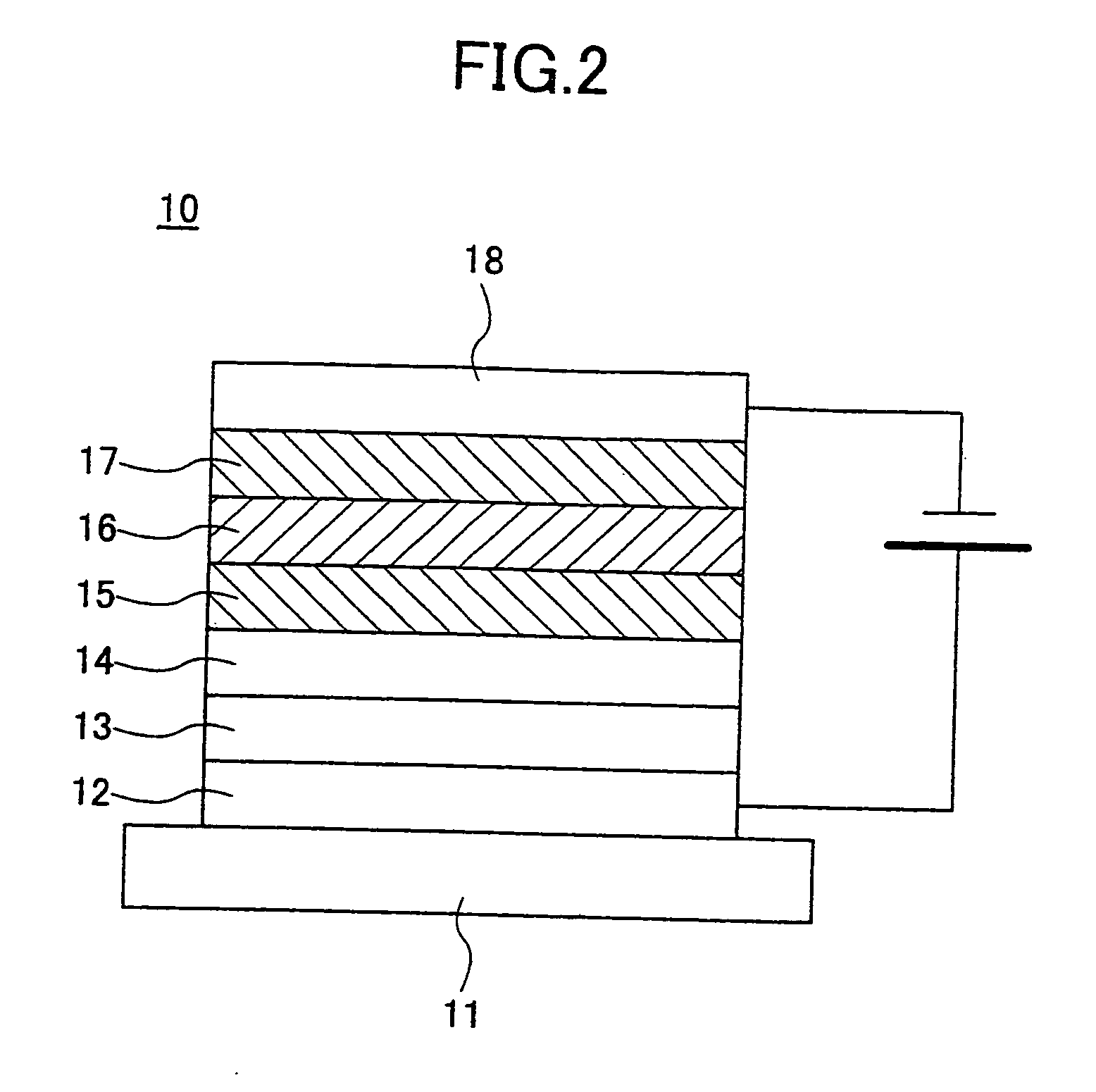Organic Electroluminescent Element and Organic Electroluminescent Display
- Summary
- Abstract
- Description
- Claims
- Application Information
AI Technical Summary
Benefits of technology
Problems solved by technology
Method used
Image
Examples
first embodiment
[0031]FIG. 2 is a cross-sectional view of an organic EL element according to the first embodiment of the invention. As shown in FIG. 2, the organic EL element 10 includes a glass substrate 11, and an anode 12, a hole-injecting layer 13, a hole-transport layer 14, a blue light-emitting layer 15, a hole-blocking layer 16, an electron-transport layer 17 containing an electron-transporting material and a light-emitting material having an emission spectrum peak wavelength of greater than 555 nm, and a cathode 18 provided on the glass substrate 11 in that order.
[0032] The organic EL element 10 has a film thickness of approximately 10 to 1,000 nm. A thickness of more than 1,000 nm leads to shielding of the light emitted in the blue light-emitting layer 15, while a thickness of less than 10 nm leads to insufficient luminance because the thickness of the blue light-emitting layer 15 itself is excessively small.
[0033] The anode 12 and the cathode 18 are electrodes for applying voltage at a ...
first example
[0057] An organic EL element of First Example was prepared in the following manner. On a glass substrate, an ITO electrode having a film thickness of 150 nm as an anode, a 2-TNATA layer as a hole-injecting layer having a film thickness of 140 nm and containing an acceptor F4-TCNQ (2,3,5,6-tetrafluoro-7,7,8,8-tetracyanoquinodimethane) in an amount of 0.1 vol %, an α-NPD layer as a hole-transport layer having a film thickness of 10 nm, a blue light-emitting layer consisting of a host material CBP which has a film thickness of 20 nm and which contains 1,3,6,8-tetra(4-biphenyl)pyrene in an amount of 10 vol %, a BAlq layer as a hole-blocking layer having a film thickness of 10 nm, an Alq (energy gap 2.73 eV) layer as an electron-transport layer which has a film thickness of 20 nm and which contains a light-emitting material chloro[2,3,7,8,12,13,17,18-octaethylporphrinato]iron (trivalent, manufactured by Kanto Kagaku Co. Inc.) in an amount of 1 vol % as an electron-transporting material, ...
second example
[0058] An organic EL element of Second Example is the same as that of First Example, except that a red light-emitting material, 5,10,15,20-tetraphenylporphine nickel (bivalent), was used in place of the light-emitting material used in the organic EL element of First Example. 5,10,15,20-tetraphenylporphine nickel (bivalent) was contained at a content of 1 vol % in Alq (energy gap 2.73 eV) . As shown in FIG. 4 below, because 5,10,15,20-tetraphenylporphine nickel (bivalent) has a peak wavelength of 655 nm, the energy gap of 5,10,15,20-tetraphenylporphine nickel (bivalent) is smaller than the energy gap of Alq (2.73 eV).
PUM
| Property | Measurement | Unit |
|---|---|---|
| Nanoscale particle size | aaaaa | aaaaa |
| Volume | aaaaa | aaaaa |
| Wavelength | aaaaa | aaaaa |
Abstract
Description
Claims
Application Information
 Login to View More
Login to View More - R&D
- Intellectual Property
- Life Sciences
- Materials
- Tech Scout
- Unparalleled Data Quality
- Higher Quality Content
- 60% Fewer Hallucinations
Browse by: Latest US Patents, China's latest patents, Technical Efficacy Thesaurus, Application Domain, Technology Topic, Popular Technical Reports.
© 2025 PatSnap. All rights reserved.Legal|Privacy policy|Modern Slavery Act Transparency Statement|Sitemap|About US| Contact US: help@patsnap.com



